Facebook for flamingos and what if they could tweet?
As 2017 draws to a close, it's good to reflect on what has occurred in the lives of the WWT flamingos this year and what more we have learned about them. This year seems to have been a whirl of data crunching, paper writing, and project managing. But it's good to see how much more we now understand about our birds. The greater flamingo flock has been the subject of my attention of late. Because this group of birds is so large (and this makes as close as we can get in the UK to a natural setting) we can get a good idea of what a wild flamingo flock might look like. It has been data from this species that has been keeping me busy of late and that I will talk about here.
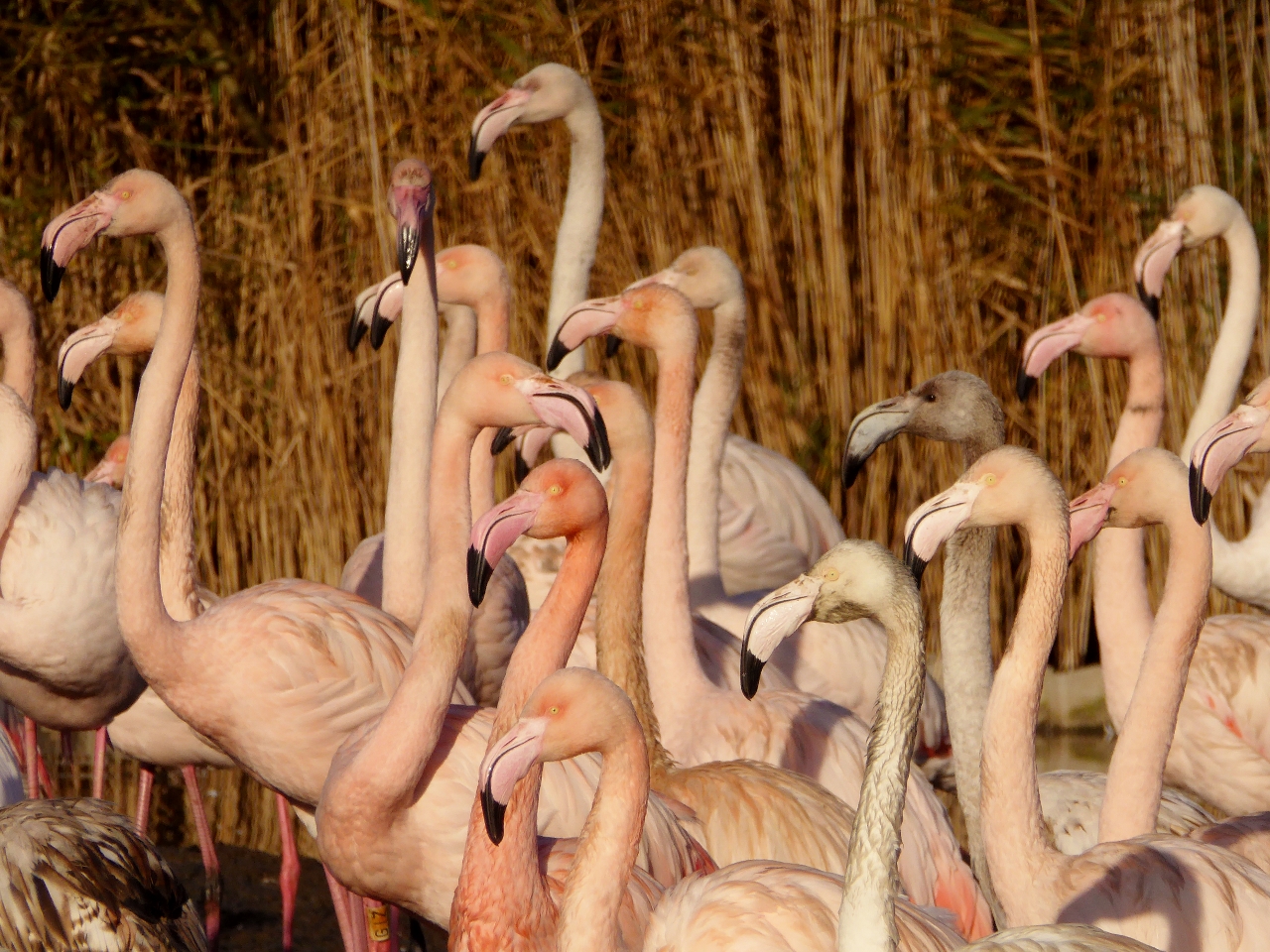 What a diverse range of colours. It's the time of year when WWT flamingos start to really come back into the pink. And their social choices are as equally varied as their feather colours.
What a diverse range of colours. It's the time of year when WWT flamingos start to really come back into the pink. And their social choices are as equally varied as their feather colours.
With the help of my students, I have collected a huge data set on these greater flamingos, with over 37000 records of flamingos being social between 2012 and 2016. So we know a great deal about who is seen with whom. And this is really interesting because there is a diverse mix of birds within this flock. From those flamingos that started the flock back in the 1960s, to the current crop of youngsters that are WWT's flamingo superstars of the future. The long lifespan of these species means they will have many years to form long-standing partnerships with others. Whilst at the same time knowing, as acquaintances say, a handful of other flamingos too. All birds have a role play in the group, and they will execute their social choices differently.
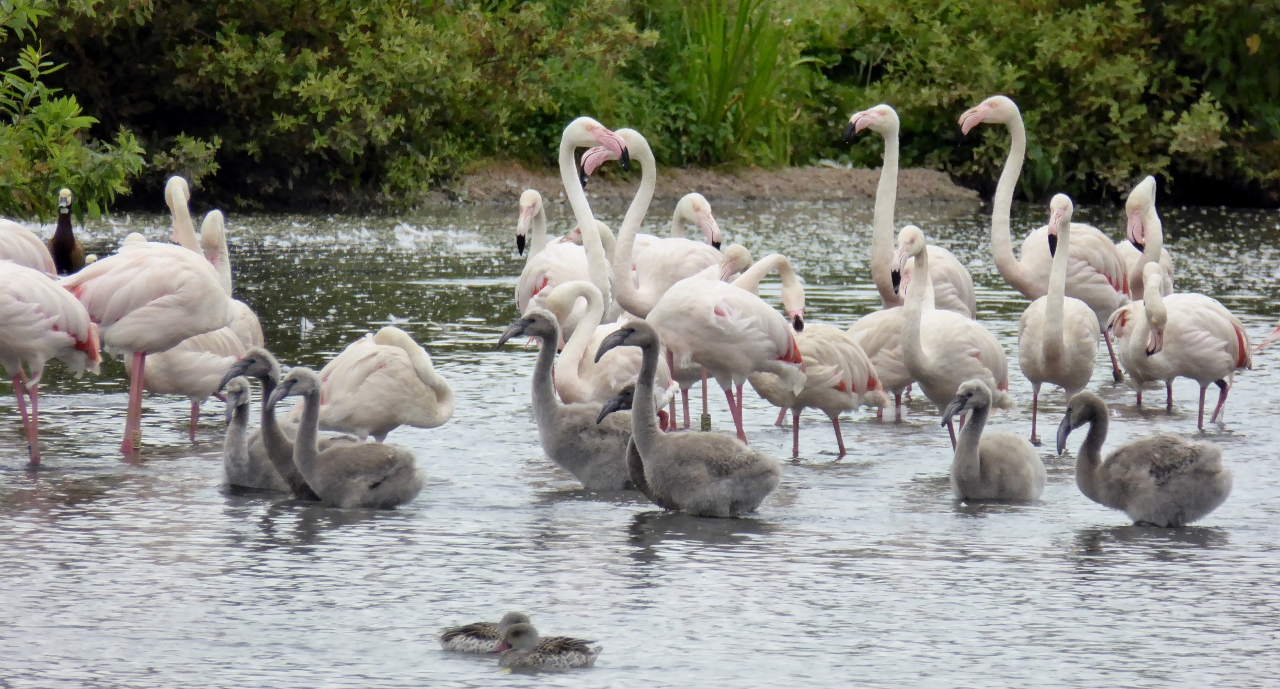 The future stars of Flamingo Lagoon. This year's crop of chicks grow up in a flock of diverse flamingo relationships.
The future stars of Flamingo Lagoon. This year's crop of chicks grow up in a flock of diverse flamingo relationships.
So what do I do with this mass of data and what do these important "flamingo friendships" look like? Well here is an example of a social network from this group. It might look like a mass of dots and lines, but it shows you all of the interconnecting relationships found between the 281 birds that were in the flock between 2012 and 2016. This network provides an insight into how birds fit together in a flock, and we can use this information to help with decisions related to flock management or bird movements.
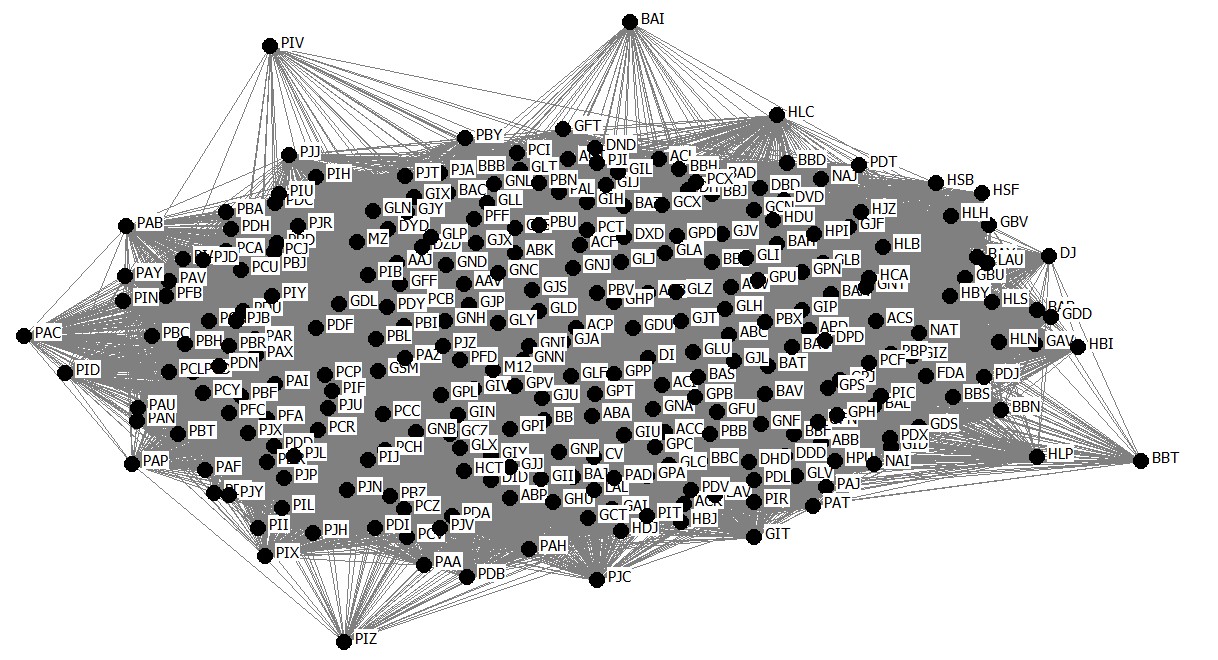 That's a whole lot of dots... what a flamingo flock looks like when you try and do some fancy statistics...
That's a whole lot of dots... what a flamingo flock looks like when you try and do some fancy statistics...
So what does this diagram tell us you might be wondering? Not too much in its current format. You can see that some birds are highly central to the links between others (these are found in the middle of the network), whereas there are flamingos that appear on the edges of the flock and may have less influence over the interactions of others. But it is only when you look more deeply into the picture, by removing weak links between birds and illustrate only the strongest friendships that it begins to make sense. The black dots (each flamingo) can have their size and shape changed to show the age and sex of each bird, for example. So we can analyse relationships between specific pairs of birds. And the line thickness can be altered so that it demonstrates the amount of time each bird spends with another one of its preferred chums.
I've already shown in a previous paper that a flamingo flock is not just made up of bonds between male and female birds, but also of ties between males, and between females. Something that we have seen before at WWT Slimbridge when pairs of male flamingos have tried to incubate an egg. These are diverse relationships that indicate important ties between animals, something that these birds like to maintain over time and are clearly worthy of their attention and energy.
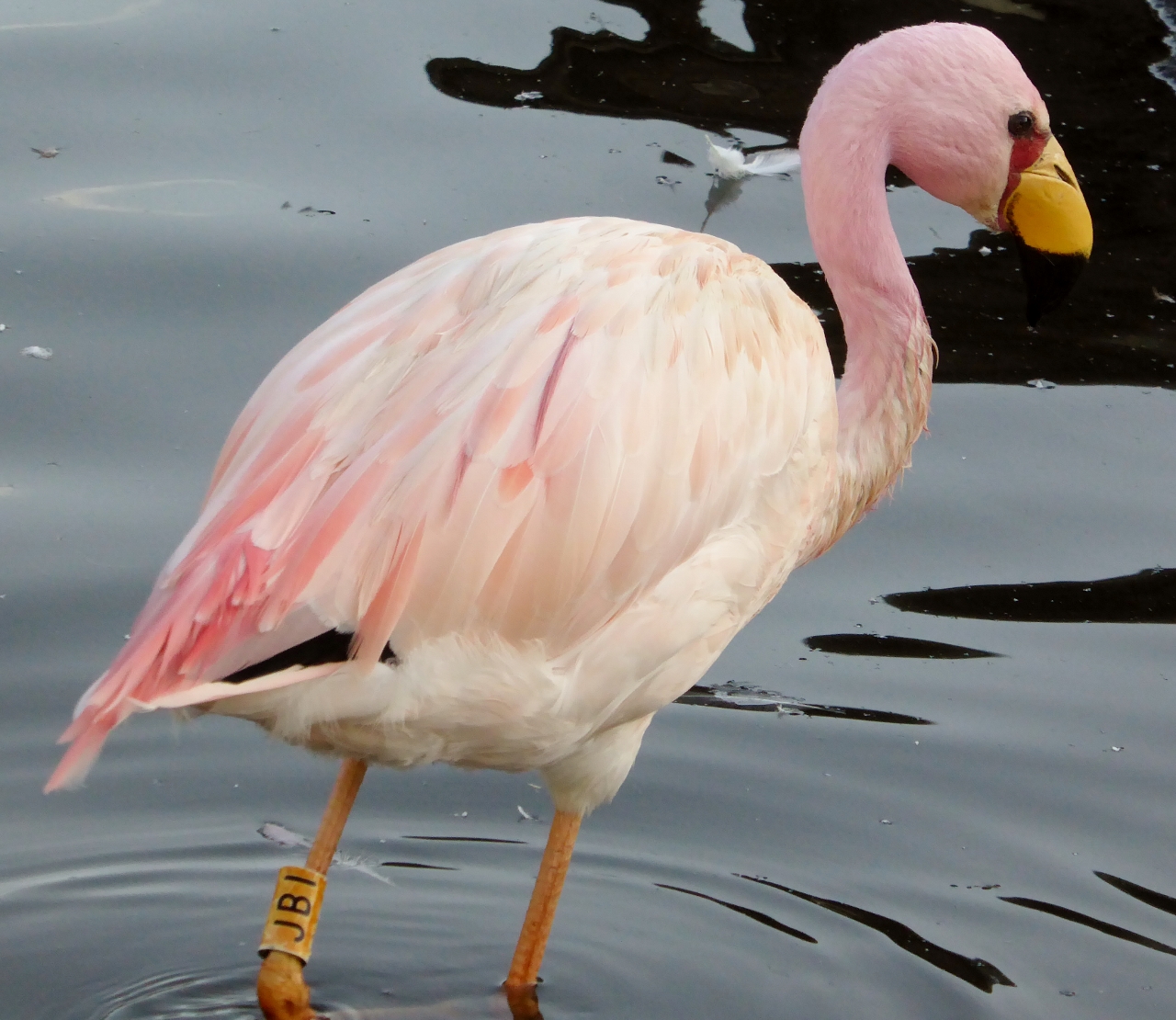 The other end of the spectrum from 280+ greater flamingos... How does Mr James fit into a network? He's the only one of his kind in his flock... but that doesn't mean he wont influence the social structure of the birds around him.
The other end of the spectrum from 280+ greater flamingos... How does Mr James fit into a network? He's the only one of his kind in his flock... but that doesn't mean he wont influence the social structure of the birds around him.
We use social networks for understanding a whole range of behaviours. And not just in the animal kingdom. Every day, hundreds of thousands of millions of people navigate through their own networks on Facebook, Twitter, Instagram etc. We can map the connections between people to see who they prefer to interact with. Just the same as we can do with the flamingos at WWT. Each greater flamingo in this flock has an average number of other birds it is to be seen with (think of this as the number of flamingos is knows well). This tells us how many flamingos a bird will generally know in its flock. The next step is to compare this between flocks. Do all flamingo species socialise in the same manner? Do they all have a similar number of other birds they keep tabs on? What happens during the breeding season- do friendships change and some partnerships become stronger? There's still a lot to find out.
What is clear from this spider's web of flamingo friends, is that we see a highly complex, incredibly detailed range of relationships present that could rival the array of tweets from an average Twitter account or the complexities shown by Facebook activity the world over.
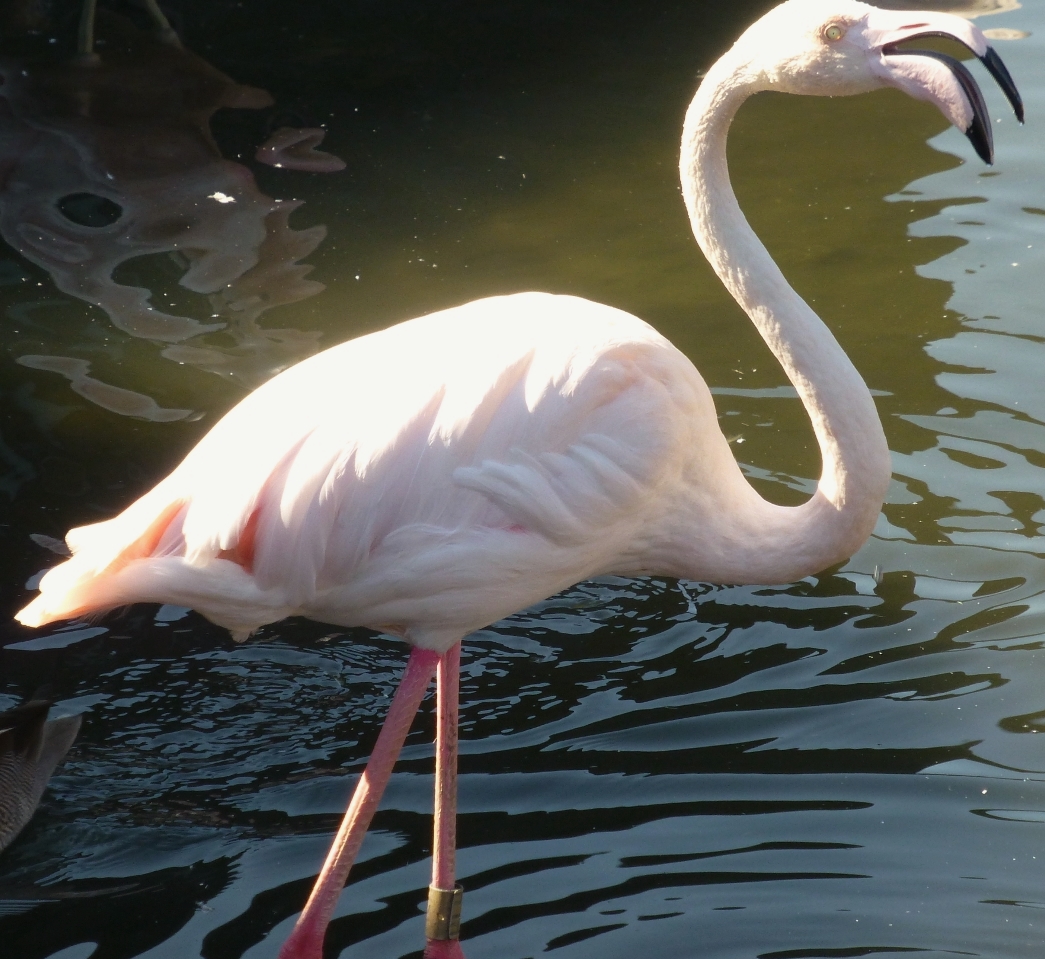 Something to shout about? If only flamingos could tweet... they would certainly have a lot to say about those around them. Just like us.
Something to shout about? If only flamingos could tweet... they would certainly have a lot to say about those around them. Just like us.



